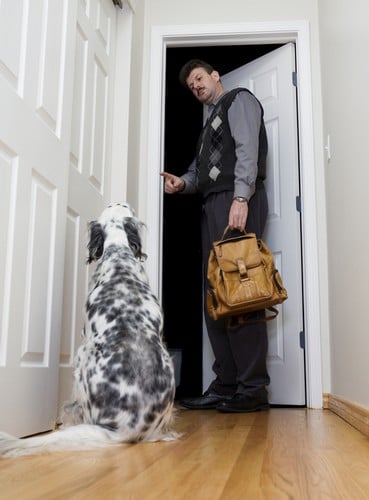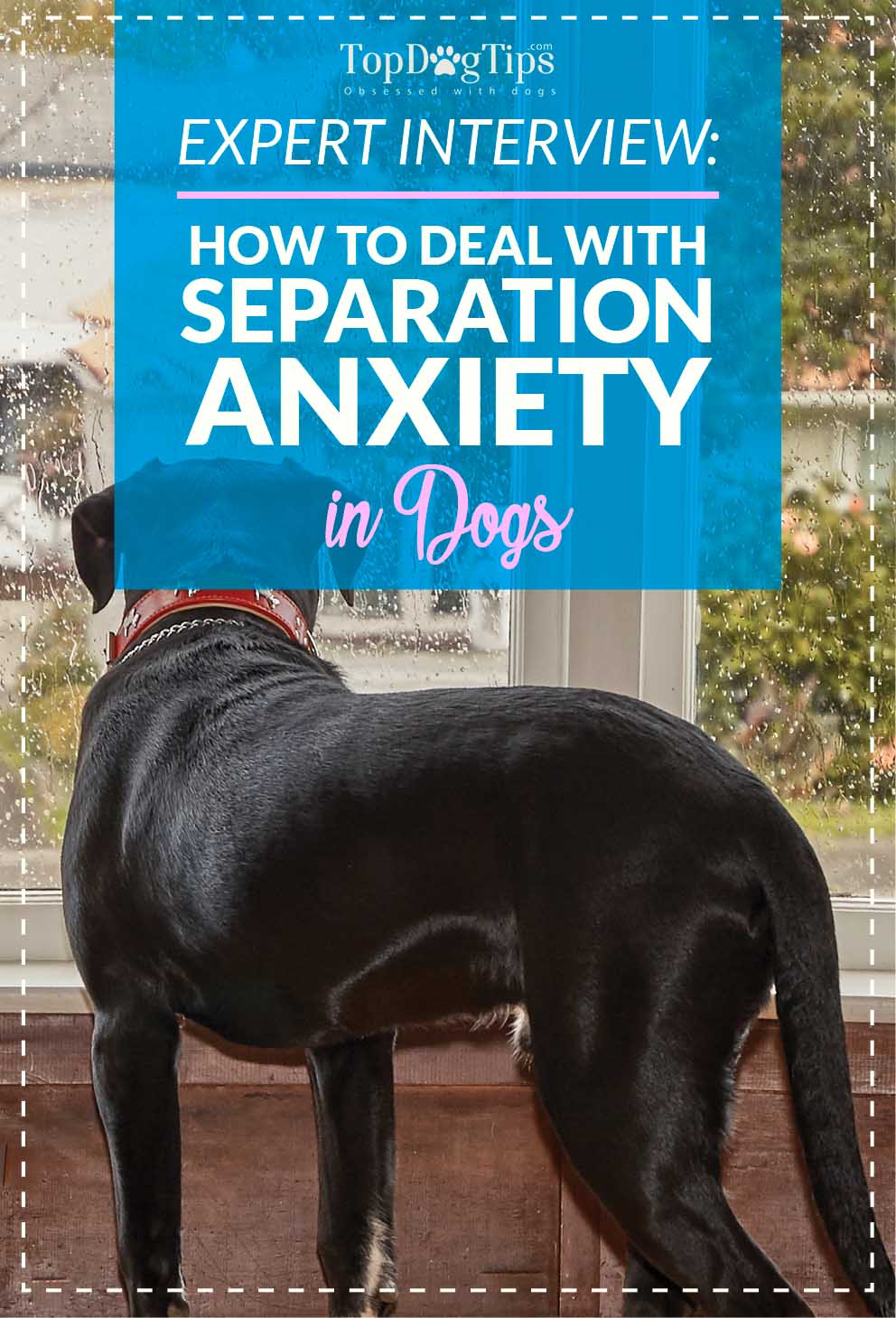Separation anxiety in dogs is very common. If you feel that your dog may be suffering with this condition, you're not alone. There are a lot of resources, including your veterinarian and other canine health professionals, that can help. There are also many products on the market now that are designed to help your pet deal with his anxiety. I spoke with Dr. Eric Barchas to learn more about separation anxiety in dogs and what pet owners can do about it.
Separation anxiety in dogs involves the pet showing signs of agitation and fear when there owner is not around. Because every dog is different, every case of separation anxiety in dogs is different. Treatments can include behavior modification training, medications or a combination of the two.
Dogs suffering from a mild case of separation anxiety may just howl or pace while their owner is gone. Dogs with severe cases may become destructive, urinate or defecate in the home or get themselves so worked up that they become physically ill. If your dog's separation anxiety is mild, you will have more time to try different treatments to find the one that works best for him. If his case is severe, you should consult the guidance of a trained professional as soon as possible.
Interview: How to Deal With Separation Anxiety in Dogs
Dr. Barchas has had a lifelong interest in and love for animals, including both wild and domesticated. Becoming a veterinarian was a natural way to spend his life working with animals. He graduated from the UC Davis School of Veterinary Medicine in June, 2000, and spent his first 7 years as a veterinarian in general practice. The remainder of his career has been spent as an emergency veterinarian.
He has dealt with many cases of separation anxiety in dogs over the last 16 years, he explained to me that the prevalence of this condition can only be estimated. Many cases of separation anxiety are never recognized by owners, and their existence may be unknown to researchers.
Therefore, a true understanding of the prevalence of separation anxiety in domesticated dogs cannot be determined.
However, in his experience as a general practitioner, Dr. Barchas would estimate that 5-10% of his patients have had separation anxiety that was of sufficient concern to their owners. At least sufficient enough to be brought to his attention.
What is separation anxiety in dogs and what causes it?
Dr. Barchas says that the condition doesn't really have a clear definition. The syndrome generally is defined on entirely subjective terms. It clearly is normal for any individual to experience some degree of anxiety. Some individuals suffer pathological amounts of anxiety. This begs the question, where does normal end and pathological begin? It's entirely subjective.
RELATED: Top 5 Best Dog Anxiety Vests to Relieve Stress in Dogs
So, what causes it? Again, the answer is unknown. Some dogs definitely appear to be born with a predisposition to the syndrome. There are known breed predispositions as well.
He explained that there is also a behavioral component to the syndrome. It is not uncommon for neurotic people to own neurotic dogs – although plenty of dogs with separation anxiety are owned by laid-back, well adjusted people. Some risk factors are a bit harder to understand fully, and some studies produce conflicting results.
There is still so much research to be done and so much we need to learn about separation anxiety in dogs.
How to recognize and treat separation anxiety in dogs
Like most other medical conditions, dog owners typically don't notice separation anxiety in their pet unless it is a severe case. They will likely chalk it up to a behavior problem without consulting their veterinarian. Dr. Barchas says that people are most likely to recognize separation anxiety in dogs when it results in house soiling or destructive behaviors.
More subtle symptoms include:
- barking (your neighbors might know about the problem before you do)
- pacing
- circling
- panting
- over-grooming
- reduced appetite and thirst
- decreased ability to settle and rest
RELATED: Top 5: Best Dog Anxiety Medications for Calming Dogs
In order to treat separation anxiety in dogs, Dr. Barchas says that proper training absolutely is the first step. Behavioral modification for separation anxiety is a very complex and nuanced topic. It's really best to work with a professional that has a lot of experience with specific type of training.
 You can read more in-depth information about behavioral modification for separation anxiety on Dr. Barchas' website. Other non-pharmacological interventions include increased exercise and dog appeasing pheromone. Anxiety vests also appear to have some promise for treating the condition.
You can read more in-depth information about behavioral modification for separation anxiety on Dr. Barchas' website. Other non-pharmacological interventions include increased exercise and dog appeasing pheromone. Anxiety vests also appear to have some promise for treating the condition.
Finally, medications are available. The most commonly used one is Reconcile, which is known as Prozac when prescribed to humans. Dr. Barchas says that Prozac is not a panacea, and the same can be said of all medications that are used to treat the syndrome.
Dr. Barchas also wants us to remember that the symptoms we humans see are only those on the outside.
Dogs with separation anxiety literally are suffering with the problem. He recommends help for any dogs whose owner suspects separation anxiety, but he does not recommend going straight to medications.
I would like to take this time to thank Dr. Eric Barchas for speaking with me about separation anxiety in dogs and the different options available for dogs dealing with with this syndrome. You can read more of Dr. Barchas' columns, as he is a regular columnist for Dogster. If you have any other questions about separation anxiety in dogs, please leave them in the comments below, and I will do my best to answer them for you.















